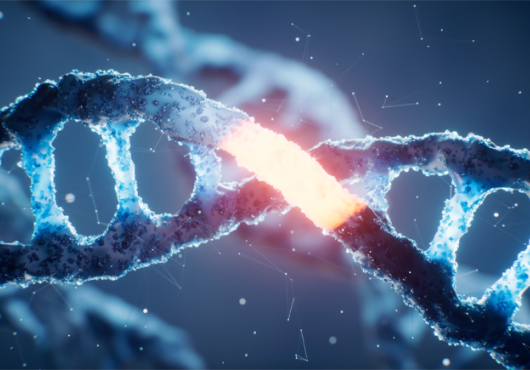
Tina Stankovic of Mass. Eye and Ear presents at Bertarelli Symposium. Image courtesy of Bertarelli Foundation
The 2015 Bertarelli Symposium on Translational Neuroscience and Neuroengineering was held on April 17 at Campus Biotech in Geneva.
The symposium brought together scientists from Harvard Medical School and the École Polytechnique Fédérale de Lausanne (EPFL) to discuss the work that they undertake collaboratively as part of the transatlantic research program of the same name.
The aim of the Bertarelli Program at Harvard Medical School is to “bridge the existing gap between basic and translational neuroscience, by supporting basic and clinical research oriented towards translational opportunities, by creating stronger ties among scientists, engineers and clinicians, and by training the next generation of leaders in the field.”
Opened by John Donoghue, director of the Wyss Center for Bio- and Neuro-Engineering at Campus Biotech in Geneva, the 2015 symposium was structured around three major themes: rehabilitation and robotics, hearing, and vision.
There was also an analysis of the dynamics of brain networks in children with autism led by André Van Der Kouwe, HMS assistant professor of radiology at Massachusetts General Hospital, and Dimitri Van De Ville, assistant professor at the University of Geneva.
The morning session’s focus on rehabilitation and robotics saw Silvestro Micera, Bertarelli Foundation Chair in Translational Neuroengineering at EPFL, and Robert Howe, Abbott and James Lawrence Professor of Engineering at Harvard, update the audience on the remarkable progress being made in the development of robotic hands.
This progress is in terms of their mechanics; their means of sensing the environment to which they respond; the control that they can now give; and, crucially, the characterization of sensation that, through the use of implant electrodes, is now possible.
In the first afternoon session, attention turned to the research being conducted in both the diagnosis and treatment of hearing loss, a medical need that it is both undeniable and, as the audience heard, drastically misunderstood in its scale, both now and in the future.
Work being done by the HMS and EPFL teams includes optical techniques for diagnosis and therapy, auditory brainstem implants and gene therapy in mouse models of human deafness.
Closing the Bertarelli Symposium was the session on vision, opened by Diego Ghezzi, researcher at Istituto Italiano Di Technologia, who spoke about neuroengineering approaches to vision restoration.
Ghezzi was followed by Matthias Lütolf, director of the Institute of Bioengineering at EFPL, Michael Young, director of the Minda de Gunzburg Center for Ocular Transplantation at Schepens Eye Research Institute, and Yvan Arsenijevic, associate professor at L’Hôpital Ophtalmique Jules-Gonin, whose work is focused on tissue engineering the macula.
Thomas Wolfensberger, director of the Vitreoretinal department at L’Hôpital Ophtalmique Jules-Gonin, gave his concluding keynote lecture “Vision Without Light: From Wacky Experiments to Current Clinical Applications of Retinal Implants.”
The guiding principle of the Bertarelli Programme is collaboration and the breaking down of borders between disciplines, academic institutions and countries.
The Bertarelli Symposium is the defining expression of this principle, bringing together a community of scientists and engineers to share knowledge, to hear about the work being done and to learn about the exceptional progress being made toward outcomes that are truly transformative for people’s lives.


